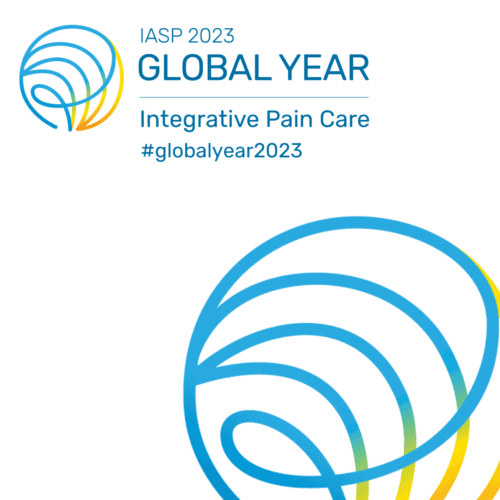Intervention Description
Manual therapy is a term describing a range of interventions used by a diverse group of clinical professionals. Theoretically one might consider all therapeutic encounters to potentially include some manual component if simple touch (either through physical examination, therapeutic reassurance, or support) is considered. However, for the purposes of this fact sheet, we will confine our description of manual therapeutic interventions to those where clinicians use their hands or instruments to deliver a physical input to the patient’s body, and where clinicians consider such treatments to be a definable element of the professional encounter.
Practitioners That Use Manual Therapies
Manual therapy is most associated with chiropractors, massage therapists, osteopaths, and physical therapists / physiotherapists; it is also used by athletic trainers and some occupational therapists. Some practitioners are autonomous primary healthcare professionals (e.g., chiropractors, osteopaths and physiotherapists/physical therapists in Anglo-Saxon countries), and some work under the direction of a physician, dependent on the medical system.
Mechanisms of Action
Manual therapeutic encounters contain a range of factors that can impact outcomes. Along with all clinical interactions, the mechanism of action of manual therapy includes both ‘specific’ and contextual effects. The contextual effects can be considered the effects on a person’s condition that come from human interaction, beliefs and expectations and sense of safety. Therefore, animal models of manual therapy may provide insight into the ‘specific’ effects, as they are less affected by some of these contextual factors (Bialosky, J. E., et al.,2009). For example, evidence from animal models using a variety of manual or mobilization methods have shown local effects, including modulation of inflammation and reduction in fibrosis (Barbe, Harris et al. 2021). In human subjects, 30 minutes of massage therapy returned serum levels of several pro-inflammatory cytokines to baseline levels in healthy male athletes following sprint exercise, and improved symptoms of pain associated with median nerve pathology (White 2020). Post-exertional muscle soreness also improved after massage (White 2020). Spinal manipulative therapy (SMT), the predominant intervention used by osteopaths and chiropractors and some physical therapists, is a good example of the multifactorial nature of mechanisms underlying clinical improvements observed (Bialosky, Bishop et al. 2009). Evidence of biomechanical factors linked to clinical outcomes is inconsistent (Wong, Parent et al. 2015). In contrast, emerging evidence increasingly suggests psychosocial factors (Sherriff 2022), such as expectation and the relationship between practitioner and the patient, to be key variables that underlie changes in clinical outcomes (Bialosky, Bishop et al. 2009, Sherriff 2022).
Clinical Evidence
Manual therapy is recommended in most clinical guidelines for non-specific musculoskeletal pain management, for both acute and persistent pain (e.g., see Pain Management Best Practices Inter-Agency Task Force Report, 2019) and for various conditions (e.g., NICE guideline [NG59] for low back pain, NICE guideline [NG226] for osteoarthritis). The evidence for different conditions is synthesised in Table 1.
Table 1 – Effect of manual therapy on pain and function by condition
| Pain Effect size (strength of evidence) | Function Effect size (strength of evidence) | |
|---|---|---|
| Chronic tension headache | Moderate (+) Short term and long-term | Moderate† (+) Short term |
| Fibromyalgia | Small† to moderate• (+) Long term | Small† to moderate• (+) Intermediate term |
| Low back pain (acute) | Moderate (+)• | Moderate (+)• |
| Low back pain (persistent) | Small (++)† short term: massage intermediate term: manipulations | Small (+)† for both short & intermediate terms |
| Low back pain (pregnancy/post-partum) | Pregnancy: Moderate (+)• Post-partum: Small (++)• | Pregnancy: Moderate (+)• Post-partum: Small (+)• |
| Neck pain (persistent) | Small (+)† to moderate (+)• Short term | Moderate (+)†,• Short term |
| Osteoarthritis knee pain | Moderate (+/++)† Short and moderate terms | Small (+)† Short-term effects |
| Osteoarthritis hip pain | Small (+)† Short term | Small (+)† Short and intermediate terms |
Short-Term: 1 to <6 months; Intermediate-Term: ≥6 to <12 months; Long-Term: ≥12 months
Effect Size: none, small, moderate, or large improvement
Strength of Evidence: + = low (yellow), ++ = moderate (green), +++ = high (blue)
• (Bagagiolo 2022); † (Skelly, Chou et al. 2020) – these two reviews were chosen for their breadth and quality
An Integrated Care Approach
Existing clinical guidelines promote integrating manual therapy into management with other modalities (Kamper Apeldoorn et al. 2014). There is some evidence supporting transdisciplinary integrative care, using manual therapy alongside psychological interventions (e.g. Acceptance and Commitment Therapy) (Abbey, Nanke et al. 2021; Ariza-Mateos, Cabrera-Martos et al. 2019; Coronado, Brintz et al, 2020). Providing manual therapy in such a model of care may support efficient delivery of services, with particular benefit where access to multidisciplinary care is restricted.
References
- Abbey, H., et al. (2021). “Developing a psychologically-informed pain management course for use in osteopathic practice: The OsteoMAP cohort study.” International Journal of Osteopathic Medicine 39: 32-40.
- Ariza-Mateos, M. J., Cabrera-Martos, I., Ortiz-Rubio, A., Torres-Sánchez, I., Rodríguez-Torres, J., & Valenza, M. C. (2019). Effects of a patient-centered graded exposure intervention added to manual therapy for women with chronic pelvic pain: a randomized controlled trial. Archives of Physical Medicine and Rehabilitation, 100(1), 9-16.
- Bagagiolo, D. R., D. Borrelli, F. (2022). “Efficacy and safety of osteopathic manipulative treatment: an overview of systematic reviews.” BMJ open 12(4): p.e053468.
- Barbe, M., et al. (2021). “Key indicators of repetitive overuse-induced neuromuscular inflammation and fibrosis are prevented by manual therapy in a rat model.” BMC Musculoskelet Disord 22(1): 417.
- Bialosky, J. E., et al. (2009). “The mechanisms of manual therapy in the treatment of musculoskeletal pain: a comprehensive model.” Manual therapy 14(5): 531-538.
- Coronado, R. A., Brintz, C. E., McKernan, L. C., Master, H., Motzny, N., Silva, F. M., … & Archer, K. R. (2020). Psychologically informed physical therapy for musculoskeletal pain: current approaches, implications, and future directions from recent randomized trials. Pain Reports, 5(5).
- Kamper, S., et al. (2014). “Multidisciplinary biopsychosocial rehabilitation for chronic low back pain (Review).” Cochrane Database of Systematic Reviews 9: [Online] Available at: http://onlinelibrary.wiley.com/ doi/10.1002/14651858.CD14000963.pub14651853/full.
- Sherriff, B., Clark, C., Killingback, C. Newell, D. (2022). “Impact of contextual factors on patient outcomes following conservative low back pain treatment: systematic review.” Chiropr Man Therap 30(1): 1-29.
- Skelly, A., et al. (2020). “Noninvasive Nonpharmacological Treatment for Chronic Pain: A Systematic Review Update. Comparative Effectiveness Review No. 227.” AHRQ Publication No. 20-EHC009(Rockville, MD: Agency for Healthcare Research and Quality).
- White, G. W., SL. Caterini, JE. Di Battista, AP. Rhind, SG. Wells, GD. (2020). “Massage Therapy Modulates Inflammatory Mediators Following Sprint Exercise in Healthy Male Athletes.” J Funct Morphol Kinesiol 5(1): 9.
- Wong, A., et al. (2015). “Do participants with low back pain who respond to spinal manipulative therapy differ biomechanically from nonresponders, untreated controls or asymptomatic controls?” Spine 40(17): 1329–1337.



